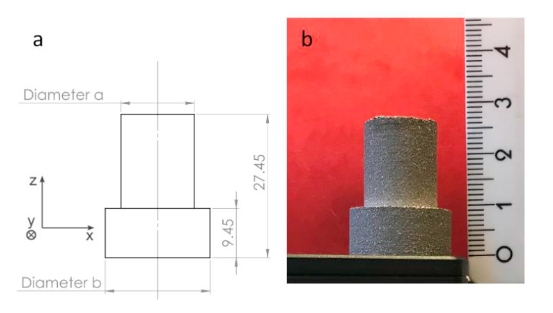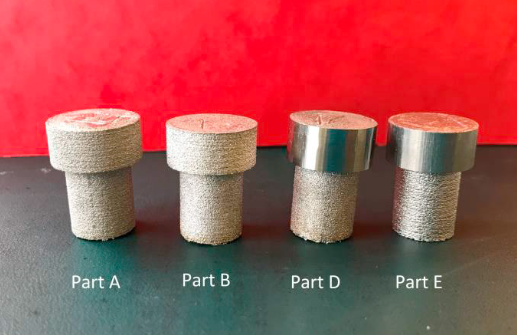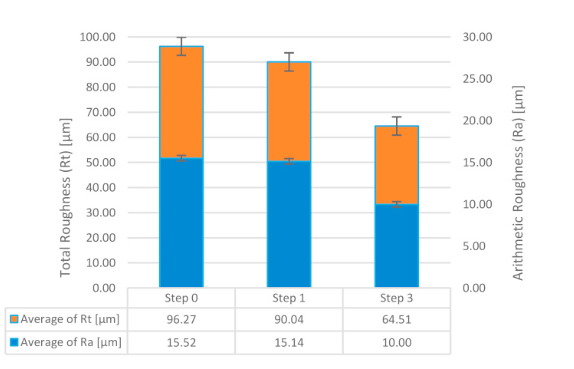The Effects of Machining on Chemical Finishing of Titanium EBM Parts
Belgian scientsits have taken on a unique study in evaluating AM parts, releasing their findings in ‘Influence of Conventional Machining on Chemical Finishing of Ti6A14V Electron Beam Melting Parts.’ Acknowledging the positive impacts additive manufacturing has made in a wide range of industries—from medicine to aerospace, construction, and so much more—the authors point out that there is still much to learn as challenges continue to arise in the face of ongoing innovation.
In this study, titanium alloy printing (Ti6Al4V) with electron beam melting (EBM) is the focus, along with challenges in production—mainly dealing with roughness that reduces necessary resistance to fatigue. Such defects can be common and may discourage users from branching out into using new technology.
Finishing is often required to ensure optimum performance, with numerous processes available for refining the surface further:
- Shot peening
- Tribofinishing
- Vibratory finishing
- Conventional machining
- Laser polishing
- Shape adaptive grinding
- Electrochemical treatments such as chemical etching, electrochemical polishing, and plasma electrolytic polishing
Samples were printed and then evaluated, as the researchers compared the roughness of Ti6Al4V EBM parts that were chemically finished before and after robotic machining. An Arcam A2 machine was used for printing, and part and core surfaces were evaluated, using cylindricity and roughness measurements.
In experimenting and comparing the effects of conventional machining on chemical finishing, the researchers employed four steps:- Preliminary analysis
- First chemical etching
- Robotic milling
- Second chemical etching
Arithmetic roughness was minimally affected by the first chemical etching, showing a decrease of 2.5 percent.
“Roughness decreases dramatically after robotic milling and reaches results < 0.5 μm for some parts (reduction of 97%),” stated the authors. “This last roughness result allows to foresee demanding application of the treated part cylinder according recommendation of Ra < 1.6 μm for contact surface.”
Ultimately, total roughness measurement conclusions were the same as RA in the initial chemical etching, showing a decrease of 6.5 percent, and 95 percent for robotic milling:
“These measurements have been only made on two parts. So, it would be interesting to pursue analysis and make a chemical etching with more parts robotically milled beforehand to assess this influence of chemical etching on robotic milling in terms of Rt,” stated the researchers.
“Even if the parts were coming from the same region of the building plate, cylindricity of raw parts were heterogeneous (σ = 0.027 mm for an average cylindricity of 0.062 mm). The first chemical etching did not change these results. However, robotic milling degraded cylindricity of the part by 300% due to the process itself. Chemical etching does not degrade cylindricity while robotic milling does,” concluded the researchers.
“This process is very promising since it allows to treat the part regardless of its geometry and without inducing stresses on the part surface. However, it was not possible to reach an arithmetic roughness as good as after robotic milling. Moreover, after having applied a chemical etching on the core material of the part, Rt increased and the shiny surface became dull. More analysis will be required to assess if this aspect modification is linked to a metallurgical change of the part surface material.”
Titanium has been the source of much research to date, from evaluation of scaffolds in bioprinting to testing medical devices, improving 3D-printed implants, and more. What do you think of this news? Let us know your thoughts! Join the discussion of this and other 3D printing topics at 3DPrintBoard.com.
[Source / Image: ‘Influence of Conventional Machining on Chemical Finishing of Ti6A14V Electron Beam Melting Parts’]
Subscribe to Our Email Newsletter
Stay up-to-date on all the latest news from the 3D printing industry and receive information and offers from third party vendors.
Print Services
You May Also Like
New Business: Temporary, Migratory, & Modular 3D Printed Architecture
If we look at potentially emerging 3D printing businesses, then architecture has not been fully explored. Yes, there is a lot of house 3D printing going on worldwide. From deployable...
3D Printing News Briefs, April 19, 2025: Material Extrusion Standard, Metal Powder, & More
In today’s 3D Printing News Briefs, we’re covering a proposed standard for material extrusion, before moving on to business and metal powder. We’ll end with a commercial store’s robotic 3D...
Japan Unveils World’s First 3D Printed Train Station
Japan is now home to what we believe is the world’s first train station built with 3D printing technology. Located in Arida City, just south of Osaka, the new Hatsushima...
restor3d Raises $38M to Expand 3D Printed Orthopedic Implants
Backed by $38 million in new funding, restor3d is pushing ahead with the launch of four personalized implant lines, set to roll out in 2025 and 2026. This latest venture...






























